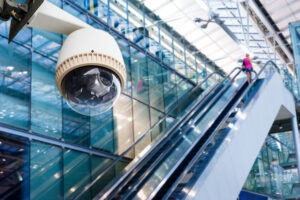Understanding New CCTV Technology
Safety and security solutions continue to evolve and, at the centre of this evolution, is CCTV technology. Present in our society for over 30 years now, CCTV remains a crucial tool when it comes to fighting crime and keeping people safe. But, as with all technology, the capabilities of CCTV have moved on considerably since it was first launched. And that’s why it’s important to understand new CCTV technology and the rules associated with it.

Which CCTV Camera is Best for an Office?
A wide range of options are available when it comes to choosing a CCTV camera for an office; the best ones to look at are:
Wireless: These cameras benefit from wireless technology and ensure that your cameras remain discreet and don’t impact the aesthetics of your office. Best of all, wireless CCTV cameras can be repositioned with minimal fuss and disruption.
Pan/Tilt/Zoom: Offices can be large and, therefore, difficult to monitor. But a Pan/Tilt/Zoom camera gives you the freedom to rotate the view in order to investigate all activity. This allows you to keep an eye on large spaces with just one camera.
Domed: A major benefit of a domed camera is that they provide a discreet solution to your monitoring needs. With a camera housed within a dome, a domed camera minimises the intrusive effect of a ceiling-mounted camera.
When it comes to the form in which these technologies take, there are generally two options: analogue and digital. Analogue solutions tend to be more cost-effective and their network cabling London allows cameras to be set up over long distances. Digital solutions, meanwhile, provide high-quality video and continuous recording. And the footage captured, by both analogue and digital solutions, can easily be recorded directly to external hard drives. This is much more convenient than traditional videotape solutions and allows multiple backups to be created quickly.
What is the best position for CCTV?
The best place to install CCTV cameras in an office is dependent on the type of camera being used. Cameras that are unable to tilt or pan, for example, are best placed in corners of the office in order to cover a wide area. If your cameras do have the option to tilt or pan then it makes sense to position them in the centre of the office where they can maximise their coverage. Additionally, it’s important that cameras are positioned so that they can easily monitor any entry or exit points.
What are the rules about CCTV cameras?
It’s vital that you use CCTV in a manner that is legal and respects the privacy of your staff. So, if you are installing CCTV in your office, make sure you abide by the following rules:
Inform Staff: It is illegal to install CCTV cameras without telling your staff. Make sure that this is communicated before installation and that it is referenced in any staff contracts
Follow Data Protection Laws: The recordings of your staff count as personal data, so they need to be treated correctly. In order for this data cabling Watford to remain secure, it’s essential that access to any CCTV recordings is limited to a select few. Naturally, strong password protection should also be applied to any external hard drives and recordings.
Do Not Keep Footage Indefinitely: It’s not necessary to keep footage for any longer than it’s useful. In general, keeping footage for between 30 – 90 days is acceptable. But, after this, it should be disposed of correctly and deleted in a manner that makes it irretrievable.
Original Source: Latest CCTV Technology